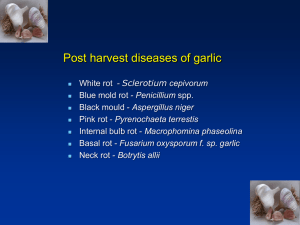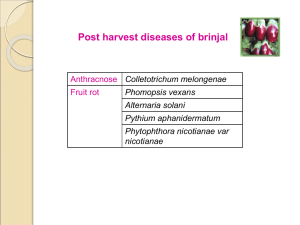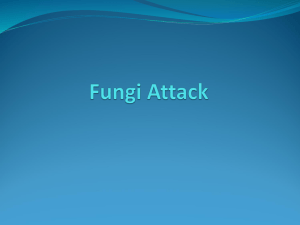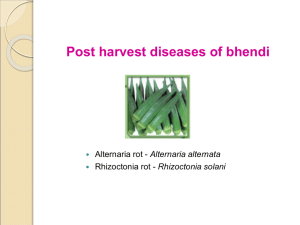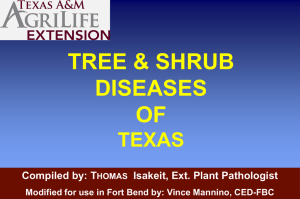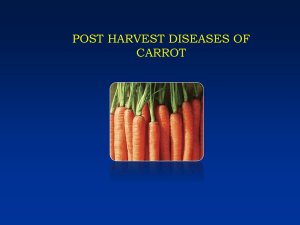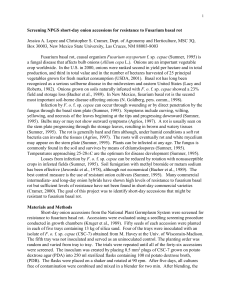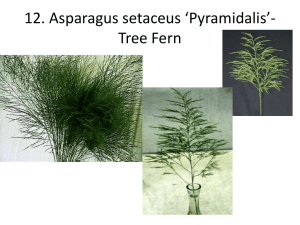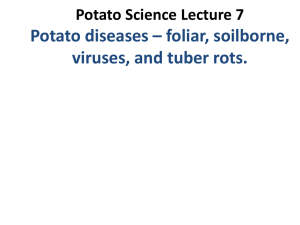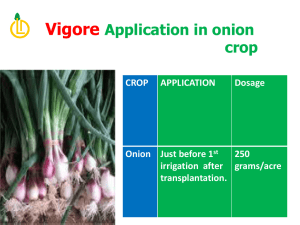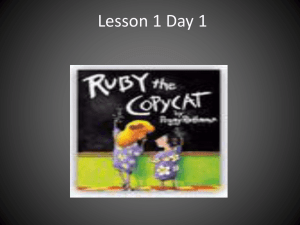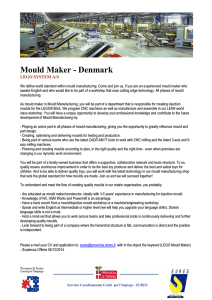Onion
advertisement
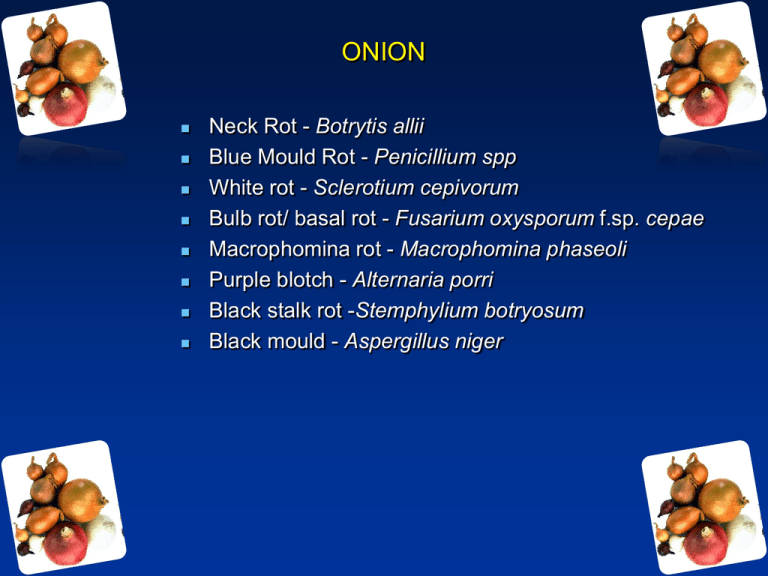
ONION Neck Rot - Botrytis allii Blue Mould Rot - Penicillium spp White rot - Sclerotium cepivorum Bulb rot/ basal rot - Fusarium oxysporum f.sp. cepae Macrophomina rot - Macrophomina phaseoli Purple blotch - Alternaria porri Black stalk rot -Stemphylium botryosum Black mould - Aspergillus niger Neck Rot - Botrytis allii Latent disease - although infection takes place in the field Softening of scales which take on a water soaked appearance Under moist conditions - greyish sporulating mycelial mat develops on the surface of the scales Mode of spread and survival Fungus persists saprophytically on dead onion tissue, on humus in soil and as sclerotia near the surface of previous onion crop cells Sclerotia germinate in moist weather and produce conidia that are disseminated by air currents When conidia land on the onion necks that are cut or wounded they can geminate, penetrate and kill onion tissue Control Dusting the seed with benomyl at 1g/kg of seed Avoid excessive and late (after mid-July) applications of nitrogen Rapid and thorough drying directly after harvest Provide good ventilation for curing onions before storage Blue Mould Rot - Penicillium spp. Initial symptoms - water soaked areas on the outer surface of scales Later, a green to blue green, powdery mould may develop on the surface of the lesions Infected areas of fleshy scales are tan or grey when cut In advanced stages, infected bulbs may disintegrate into a watery rot Penicillium digitatum, P. oxalicum, P. expansum, P. luteum Produces enormous number of spores on a broom like conidiophore Saprophytes on plant debris and senescent plant tissue Invasion - through wounds, bruises, or uncured neck tissue Optimum conditions include moderate temperatures (21° to 25°C) and high relative humidity Management Avoid wounds and insect damage to bulbs Harvest and handle onion bulbs with a minimum of bruising or wounding Cure the bulbs so the necks are dry Store bulbs at temperatures of 41°F (5°C) or less with low relative humidity White rot / mouldy nose/ Dry rot (Sclerotium cepivorum) Leaves - yellow and dieback Roots - rotten & base of the bulb covered with a watery or grey fungal growth Numerous small black spherical sclerotia are produced Mode of spread and survival Sclerotia persists in soil for eight years Pathogen has no direct sporulation stage and it is not air borne Sclerotia are transported from field to field by flood water Management Long rotation of 8 to 10 yrs Good drainage Use of healthy planting materials Destruction of wild onion and leeks Seed dressings-benomyl/carbendazim Bulb rot/ basal rot (Fusarium oxysporum f.sp. cepae) Occur in patches Leaves - turn yellow and then dry up slowly Entire plant shows complete drying of the foliage Bulb - shows soft rotting and the roots get rotted Whitish mould growth on the scale Fungus Produces many chlamydospores which are thick walled resting spores Microconidia – one celled and thin walled Macroconidia Fusarium sp Mode of spread and survival Soil borne Infection occurs through root, either directly or through wounds Soil insects are common carriers Epidemiology High temp and low level of soil moisture - favourable for high disease incidence Temp- 28 to 32oc Management Field sanitation - destruction of infected plant debris Soil drenching - COC-0.25% Pre planting treatment of bulbs - benomyl 15%+ mancozeb 60% Local Bellary, Poona Red Globe, Patna Red, White Large - resistant varieties Black stalk rot (Stemphylium botryosum) Affects garlic and leek Attacks only diseased, injured bulbs and aging tissue Damage by weakening the seed stalks when they are almost ripe causing them to break over Spoil the appearance of the bulb with a sooty mould before they are marketed The fungus Stemphylium botryosum growing and sporulating on top of a downy mildew lesion Fungus Producing short clavate to cylindrical asci in brown pseudothecia Ascospores yellow to yellowish brown, oval to ellipsoid, 26-50 x 1020 um with 1-5 vertical and 7 transverse septa Conidia - Stemphylium botryosum Control Harvest without causing any bruises Bulbs should be dried properly before storage Purple blotch/scald disease Alternaria porri Leaves - whitish minute dots on leaves with irregular chlorotic areas on tip portion Circular to oblong concentric black velvety rings appear in chlorotic area Lesions develop towards the base of the leaves Leaves die from the tip downwards, break at the point of infection and hang down Bulbs – semi watery rot, shrinkage of the fleshy bulb scales and desiccation followed by these scales becoming dry and papery Fungus Mycelium - branched, coloured and septate Conidiophores - singly or in groups, septate, pale to mid brown Conidia - solitary, straight or curved Conidia Conidium Mode of spread and survival Carried through seed bulbs collected from infected field Spreads mainly through air borne spores Pathogen enters through stomata or wounds Survives in plant debris for 8 months Epidemiology Temp - 21 to 30oc RH - 90 % Management Seed treatment - thiram @ 2.5g/kg of seed Three sprays of, • Copper oxychloride - 0.25% • Chlorothalanil - 0.2% • Zineb - 0.2% • Mancozeb - 0.2% Varieties - New Selection, Red Creole - resistant Black mould - Aspergillus niger Masses of black powdery spores on both exterior and between the scales of the bulbs Especially along the vascular strands of the veins Fungus Mycelium - branched, septate thick walled foot cells differentiate and give rise to a single conidiophore Conidiophore - globose on which brown sterigmata are formed Vesicle, sterigmata, conidia make up the black head - characteristic of the fungus Control Rapid and thorough curing Storage - good ventilation Temp - just above 0oc Macrophomina rot Macrophomina phaseoli Rotting of onion in storage Diseased bulbs become ashy Close examination shows – dark charcoal coloured blemishes on one or two scales below the outer papery scale Many pin head size sclerotia- embedded in affected tissues Control Dipping bulbs in formalin 0.03% or boric acid 2.0%
